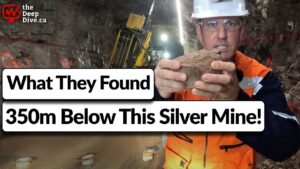HALIFAX, NOVA SCOTIA / TheNewswire / March 3, 2015 / Oceanus Resources Corporation (TSXV:OCN) ("Oceanus" or the “Company”) is pleased to announce the results of its Phase 3 exploration program on the La Lajita Property in Durango State, Mexico. Four diamond drill holes were completed at the Santo Nino prospect. Geological mapping, prospecting and sampling were completed along the La Lajita fault system. Stream sediment sampling was completed in the north-western area of the property to assess the gold potential along the north-west extension of the La Lajita fault system.
The Phase 3 exploration program highlights are:
— Diamond drilling extends the mineralized zone down dip at Santo Nino
— Sampling confirms high grade gold occurrences at Cerro del Sol
— Trenching confirms gold mineralization at Esperanza and Zanjas
— Stream sediment sampling results indicate a northwest extension of the La Lajita fault system
Drilling Extends the Mineralized Zone Down Dip at Santo Nino
Four diamond drill holes totaling 555.4 meters of PQ3 triple tube were drilled at the Santo Nino prospect to test the northern strike extension of the high grade ore shoot intersected previously by holes OCN-13-005, OCN-14-008, OCN-14-026 and OCN-14-027. Hole OCN-13-005 from 2013 returned 7.1 grams per tonne gold and 48.8 grams per tonne silver over a core length of 20 meters, including 18.9 g/t gold and 71.3 g/t silver over a core length of 6.5 meters at the Santo Nino (see press release dated September 24, 2013). Visible gold was present in and is associated with the high-grade interval in hole OCN-13-005. The Phase 2 drill program in summer 2014 returned 3.13 g/t gold and 22.3 g/t silver over a core length of 26.0 meters hosted by sheared and altered tuffs with greenish quartz breccia with visible gold in hole OCN-14-026 (see press release dated September 17, 2014).
The Phase 3 drill program was focused to define the down dip extension of the mineralization along strike to the northwest. Highlights from the fall drilling program include:
— 1.5 grams per tonne gold and 35.8 grams per tonne silver over a core length of 8.8 meters from 110.0 to 118.8 meters, including 4.3 grams per tonne gold and 49.2 grams per tonne silver over 1.5 meters from 112.0 meters to 113.5 meters in hole OCN-14-028
— 1.6 grams per tonne gold and 36.8 grams per tonne silver over a core length of 8.8 meters from 123.9 meters to 132.7 meters, including 2.6 grams per tonne gold and 37.4 grams per tonne silver over 3.3 meters from 129.4 meters to 132.7 meters in hole OCN-14-029
Drill hole OCN-14-030 entered the breccia zone and intersected 2.0 grams per tonne gold and 51.7 grams per tonne silver over a 1 meter interval, however was then lost due to difficult drilling conditions.
Drill hole OCN-14-031 intersected a narrow zone of mineralization grading 4.4 grams per tonne and 123.6 grams per tonne silver over a 1 meter interval.
A table of drill results is included in Appendix A.
The next phase of the drilling program at Santo Nino will continue to define the full strike length of the mineralization and test down dip along the structure.
Sampling Confirms High Grade Gold at Cerro del Sol
At the Cerro del Sol prospect geologists observed local gambusinos performing small scale mining on an east-west trending epithermal breccia zone over a strike length of 50 meters and to a depth of 10 meters. The breccia consists of angular fragments of the wall rock supported by a siliceous, jasperoidal, green quartz with colloform textures. Geologists observed visible gold in the breccia with gold grains up to 1.0 mm in size.
Grab samples were collected on the basis of their interesting geological characteristics. Although visible gold was observed in the Cerro del Sol breccia, none was seen in the samples sent to the laboratory for analyses. Sampling of a jasperoidal breccia material graded 53.0 grams per tonne gold and 123.3 grams per tonne silver and a sample of green quartz breccia graded 39.4 grams per tonne gold and 138.7 grams per tonne silver.
Company geologists recommend a program of mapping, trenching, sampling and drilling to follow-up this new gold discovery.
Trenching Confirms Gold Mineralization at Esperanza and Zanjas
At the Esperanza prospect 35 meters of hand dug trenches uncovered a quartz vein breccia zone. The quartz vein system is silicified over a strike length of 30 meters. Meter long channel samples were collected along the trench and two sections of the trench returned assay values as follows:
— 0.7 grams per tonne gold and 82.0 grams per tonne silver over 7.0 meters
— 1.0 grams per tonne gold and 13.9 grams per tonne silver over 6.7 meters
Follow-up mapping, trenching and sampling programs are planned to define the strike length of the mineralization at the Esperanza prospect.
At the Zanjas prospect 188 meters of trenching was completed by bulldozer. The trenching uncovered visible gold in altered and brecciated rocks. Anomalous gold and silver values were detected including the following:
— 0.5 grams per tonne gold and 13.1 grams per tonne silver over 2.0 meters in Trench 1
— 0.3 grams per tonne gold and 8.5 grams per tonne silver over 2.4 meters in Trench 2
— 0.4 grams per tonne gold and 10.7 grams per tonne silver over 1.4 meters in Trench 4
Stream Sediment Sampling Indicates Northwest Extension of the La Lajita Fault
Eighty-two (82) stream sediment samples were collected in the northwestern corner of the property to assess the gold and silver potential along the extension of the northwest trending La Lajita fault. Twelve (12) consecutive samples along a stream analyzed anomalous gold values ranging from 261 to 1,660 ppb gold. These values are considered to be very significant. These samples also carried elevated levels of silver, copper, lead and zinc.
Follow-up mapping, prospecting and sampling surveys are proposed to locate the source of the precious metal anomalies in the northwest corner of the property.
La Lajita Property
The La Lajita Property comprises 12 mining concessions located in the south-west corner of Durango State, Mexico, along the western flanks of the Sierra Madre Occidental. This area is recognized as an extremely prospective mineral belt for gold and silver deposits. Furthermore, this area is a virgin district having never been discovered or worked by the Spanish and there are no historic mining records. There are numerous pits, adits and small shafts that have been developed by local gambusinos during the 1900’s and artisanal mining in the area continues to this day.
Detailed geological mapping and channel sampling program completed by Oceanus has confirmed the presence of seven (7) gold-silver prospects along the La Lajita fault system which has been traced along surface for over three kilometers. These prospects from north to south are; La Fortuna, Esperanza, Santo Nino, Dos Hermanos, Mina la Guadalupe, Las Ratones and the Cerro del Sol. At Mina la Guadalupe, gold mineralization has been exposed for 200 meters on surface in numerous small scale workings, and in one significant underground working, where the miners drifted in the high-grade gold mineralization 120 meters along strike.
Gold and silver mineralization at the Santo Nino prospect is associated with a 20 to 30 meter thick siliceous breccia occurring along a west dipping fault. The fault dislocates a largely felsic to andesitic sequence of tuffaceous rocks of the Upper Volcanic Complex. The gold bearing system at Santo Nino is hosted by a brecciated, maroon andesite that has two generations of gold-bearing quartz, a green siliceous breccia variety and a white quartz vein variety. The green siliceous breccia is typically auriferous with visible gold and is enveloped by a broader mineralized white quartz zone.
Lab Preparation and Assay
Oceanus samples are prepared and assayed by Activation Laboratories Ltd. (“Actlabs”). Actlabs is a CAN-P-1579, CAN-P-4E (ISO/IEC 17025:2005) accredited laboratory and independent of Oceanus. The sealed and tagged sample bags are turned over to ActLabs personnel at the site who transport them to the ActLabs facility in Zacatecas, Mexico. ActLabs crushes the samples and prepares 200-300 gram pulp samples with ninety percent of the pulp passing Tyler 150 mesh (106μm).
The pulps are assayed for gold using a 50 gram charge by fire assay (Code 1A2-50) and over limits greater than 3 grams per tonne are re-assayed using a gravimetric finish (Code 1A3-50). Silver is completed using total digestion Code ME-4 acid procedure and over limits greater than 100 ppm are fire assayed using a gravimetric finish (Code 1A3-50). Copper analysis is completed using the total digestion Code ME-4 acid procedure. Gold screen metallic assays are completed using the Code 1A4-1000 procedure.
Quality Assurance/Quality Control and Data Verification
Quality assurance and quality control procedures include the systematic insertion of blanks, standards and duplicates into the sample strings. The results of the assaying of the QA/QC material included in each batch are tracked to ensure the integrity of the assay data. All results stated in this announcement have passed Oceanus's quality assurance and quality control ("QA/QC") protocols.
David R. Duncan, P. Geo., a director of the Company, is the Qualified Person for Oceanus as defined under National Instrument 43-101. Mr. Duncan has reviewed the scientific and technical information in this press release.
Shares for Debt and Services
Oceanus, in accordance with the terms of TSX Venture Exchange (“Exchange”) Policy 4.3 Shares for Debt, intends to issue 312,500 common shares of the Company to settle outstanding debt in the amount of $71,875 owed to Aconi Financial Corp. Ltd. (“Aconi”) for consulting fees for management services. This issuance of common shares for debt to Aconi is subject to the approval of the TSX Venture Exchange, disinterested shareholder approval and any other required regulatory approval.
Oceanus also intends to issue common shares of the Company to Aconi for ongoing services pursuant to a consulting agreement between Aconi and the Corporation, in the amount of $75,000 every six months in accordance with the provisions of Exchange Policy 4.3, article 5 – Shares for Services. The common shares for ongoing services will only be issued after the services are performed by Aconi. The deemed price of the shares to be issued will be determined at the end of each six month period after the services are provided by Aconi. The first six month period will end on July 31, 2015. This issuance of common shares for services to Aconi is subject to the approval of the TSX Venture Exchange, disinterested shareholder approval and any other required regulatory approval.
About Oceanus Resources Corporation
Oceanus Resources Corporation is a gold exploration company run by a team of experienced mine finders. Oceanus is advancing the La Lajita Property located in the Sierra Madre Gold and Silver Belt near Durango, Mexico.
For further information, please contact:
Glenn Jessome
President and CEO
(902) 482-4494
CAUTIONARY STATEMENT:
Neither TSX Venture Exchange nor its Regulation Services Provider (as that term is defined in the policies of the TSX Venture Exchange) accepts responsibility for the adequacy or accuracy of this release.
This News Release includes certain “forward-looking statements”. All statements other than statements of historical fact, included in this release, including, without limitation, statements regarding potential mineralization and reserves, exploration results, and future plans and objectives of Oceanus, are forward-looking statements that involve various risks and uncertainties. There can be no assurance that such statements will prove to be accurate and actual results and future events could differ materially from those anticipated in such statements. Important factors that could cause actual results to differ materially from Oceanus’s expectations are exploration risks detailed herein and from time to time in the filings made by Oceanus with securities regulators.
APPENDIX A
| La Lajita Phase III 2014 Drill Hole Intersections Santo Nino Prospect | ||||||||
DDH# | From (m) | To (m) | Length* (m) | Au (g/t) | Ag (g/t) | EqAu75** g/t | Comments | |
OCN-14-028 | 107.0 | 122.9 | 15.9 | 0.9 | 28.6 | 1.3 | ||
including | 110.0 | 118.8 | 8.8 | 1.5 | 35.8 | 2.0 | ||
including | 112.0 | 113.5 | 1.5 | 4.3 | 49.2 | 4.9 | ||
OCN-14-029 | 110.9 | 134.6 | 23.7 | 0.8 | 25.3 | 1.1 | ||
including | 123.9 | 132.7 | 8.8 | 1.6 | 36.8 | 2.1 | ||
including | 129.4 | 132.7 | 3.3 | 2.58 | 37.4 | 3.1 | ||
OCN-14-030 | 137.6 | 141.2 | 3.6 | 0.74 | 33.6 | 1.19 | Hole lost due to difficult drilling conditions | |
including | 137.6 | 140.4 | 2.8 | 0.93 | 40.7 | 1.48 | ||
including | 139.4 | 140.4 | 1.0 | 2.0 | 51.7 | 2.7 | ||
OCN-14-031 | 133.4 | 134.4 | 1.0 | 4.4 | 123.6 | 6.0 | Poor core recovery | |
* The announced gold intersections are along the hole. Additional drilling will have to be done to determine the true
thickness of the mineralized zones.
** EqAu75** = Ag grade/75 + Au grade
Original Article: http://thenewswire.ca/archives?tnwcatalyst2=release_id%3D15775

















